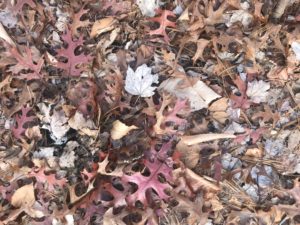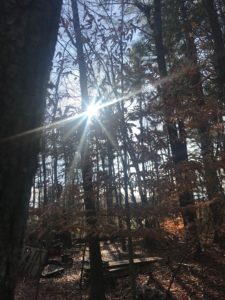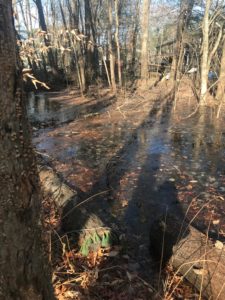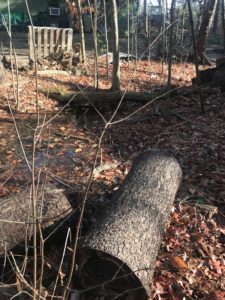For my new phenology site, I decided to spend some time right in my backyard. My brother and I used to play in the woods behind our house for hours. We would try to create mini woodland homes complete with logs for chairs and old toys for tables. We would splash around in the swamp and search for frogs even though it smelt terribly of decaying leaves. It was here where I was first introduced to the wonders of nature and grew my love for outdoor exploration.




Aldo Leopold:
It is late November now, and it is clear that the world is preparing for winter. The silence is deafening as the spring peepers hibernate and await the warm nights when they can sing again. The day is warm, and the swamp has begun to melt again after just a few days of freezing. There is a sense of peace and gratitude as the heat warms the back of my neck, reminding me that the sun will still come before winter conquers the land. I notice there are a few footprints left in the swamp mud, perhaps from one of the raccoons that enjoys checking for food around our garbage bins. Just this past May, a mother raccoon gave birth to 5 kits that run play around the swamp and live underneath our back shed. It dawned on me that I have never seen the father, only a mother with 5 rambunctious babies that eat the vegetables from our compost no matter how well we secure the fence. I notice that the landscape has changed since I’ve last been here; my dad and brother are constantly cutting down the dead trees and reusing the wood for their next project. Even when we aren’t changing the landscape, it never quite looks the same every day. Nothing is ever staying still, and I stand in awe at the beauty of the land before me as it changes season by season, day by day. It is a new piece of art every time I close my eyes.
Mary Holland:
Both my phenology spot at home and in Burlington have bodies of water in them, yet their ecologies are very different. At home, the swamp is always still. It is filled with years of branches and leaves, mainly red and white oaks and white pine needles that decay and create a nutrient-rich mud at the bottom. It freezes easily from the lack of movement and stays frozen for the majority of winter. In Burlington, the stream moves quickly and carries the fallen leaves with it. There are no oaks at this spot, only eastern hemlocks, Norway maples, and a few white pines. There are an array of ferns by the bank of the stream in Burlington, but the ferns by my house are far from the bank of the swamp. I have heard some chickadees in both places before, yet they were surprisingly absent from my backyard when I searched for them this past weekend. I could not find any fungi in my spot at home, yet there was mushrooms and other fungi sprouting everywhere by wet logs near the stream here in Burlington. The stream has its fair share of small fish jumping in and out of the stream, yet in the swamp there is no sign of fish in the still, algae filled waters. As winter falls upon New England, I expect both spots to appear similar when under snow in just a few weeks.
Google map: https://www.google.com/maps/d/u/0/edit?hl=en&hl=en&mid=1ShNVFy0nRpFcUQkSEqgHt8QBZoVmhQEC&ll=41.9162309605435%2C-71.19213002690634&z=13